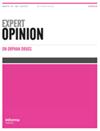造血干细胞移植治疗朗格汉斯细胞组织细胞增多症:临床发现和长期结果
IF 0.8
4区 医学
Q4 PHARMACOLOGY & PHARMACY
引用次数: 1
摘要
朗格汉斯细胞组织细胞增生症(LCH)是一种炎症性骨髓肿瘤,其特征是骨髓来源的未成熟树突状细胞积累,这些树突状细胞携带有丝裂原活化蛋白激酶(MAPK)途径基因(如BRAF V600E)的致癌突变,以及各种反应性炎症细胞。伴有危险器官受累(MS-RO(+))的耐药多系统疾病患儿预后较差。此外,复发的婴儿有显著的风险发展灾难性的神经退行性中枢神经系统疾病。本综述涵盖了1985年至2019年间通过PubMed文献检索选择的关于LCH的造血干细胞移植(HSCT)的已发表论文。专家意见:患有难治性MS-RO(+)疾病或经常出现治疗抵抗性复发的婴儿可以从同种异体造血干细胞移植(alloo -HSCT)中获益。选择hla匹配的兄弟姐妹或非亲属脐带血(UCB)干细胞来源和使用基于氟达拉滨与美法兰联合的降低强度调节(RIC)制备方案是优选的。由于移植相关的并发症,大多数移植后死亡发生在3个月内。LCH疾病活动通常在幸存者接受同种异体造血干细胞移植后3个月内消退。移植时的疾病活动性是最重要的预后因素。在进行造血干细胞移植之前,应该通过治疗来减少疾病的活动性。本文章由计算机程序翻译,如有差异,请以英文原文为准。
Hematopoietic stem cell transplantation for Langerhans cell histiocytosis: clinical findings and long-term outcomes
ABSTRACT Introduction Langerhans cell histiocytosis (LCH) is an inflammatory myeloid neoplasia characterized by accumulation of bone marrow-derived immature dendritic cells harboring oncogenic mutations in mitogen-activated protein kinase (MAPK) pathway genes, such as BRAF V600E, and various reactive inflammatory cells. Infants with chemo-resistant multisystem disease with risk organ involvement [MS-RO(+)] have poor prognosis. Further, relapsed infants have a significant risk of developing disastrous neuro-degenerative central nervous system disease. Areas covered This review covers published papers on hematopoietic stem cell transplantation (HSCT) for LCH selected through a literature search on PubMed between years 1985 and 2019. Expert opinion: Infants with refractory MS-RO(+) disease or with frequent treatment-resistant relapses can benefit from allogeneic HSCT (allo-HSCT). Selection of an HLA-matched sibling or unrelated cord blood (UCB) stem cell source and use of reduced intensity conditioning (RIC) preparative regimens, based on the combination fludarabine with melphalan, are preferable. Most deaths after HSCT occur within 3 months, due to transplantation-related complications. LCH disease activity usually regresses over 3 months after allo-HSCT in survivors. The disease activity at HSCT is the most important prognostic factor. Prior to HSCT, the disease activity should be reduced by treatment.
求助全文
通过发布文献求助,成功后即可免费获取论文全文。
去求助
来源期刊

Expert Opinion on Orphan Drugs
PHARMACOLOGY & PHARMACY-
CiteScore
2.30
自引率
0.00%
发文量
8
期刊介绍:
Expert Opinion on Orphan Drugs is an international, peer-reviewed journal that covers all aspects of R&D on rare diseases and orphan drugs.
 求助内容:
求助内容: 应助结果提醒方式:
应助结果提醒方式:


